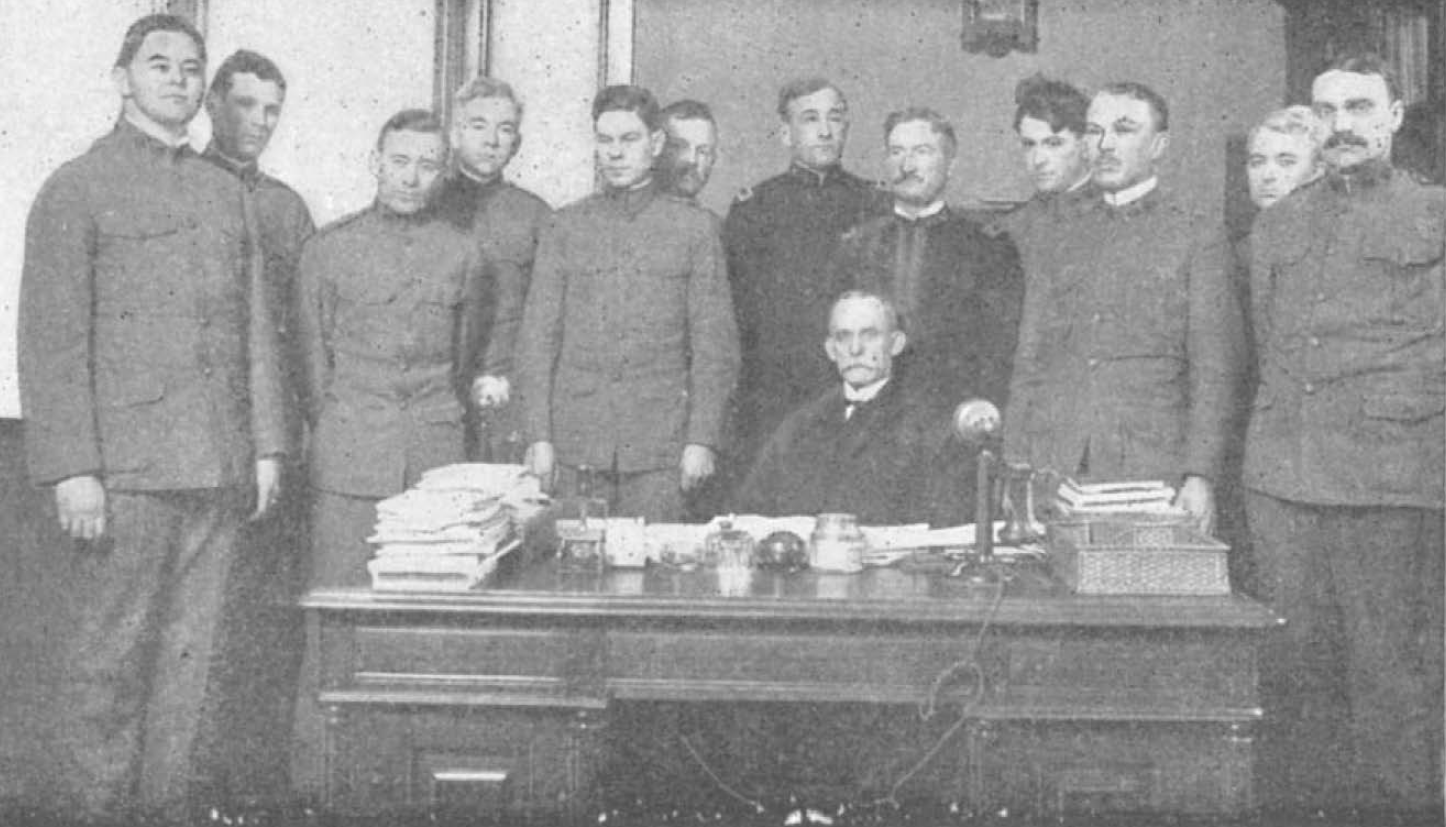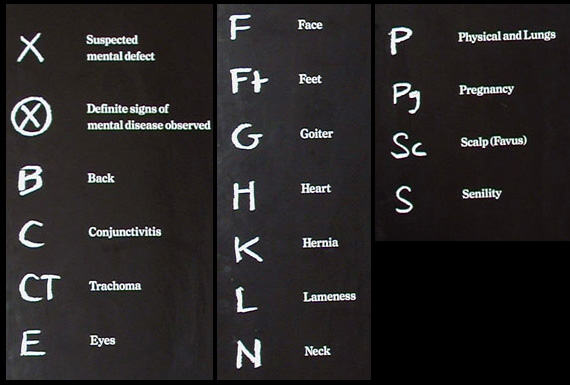Ellis Island played an important role in US immigration. This pathfinder focuses specifically on resources pertaining to the medical inspections of immigrants and the Ellis Island immigrant hospital during its busiest time period: 1892 to 1924. Resources have been selected on a variety of related medical subtopics such as intelligence testing, trachoma, and other contagious diseases. Other resources explore the social values, politics, labor needs, perceptions of medicine, and socioeconomic considerations that shaped the immigration policy dictating the type of medical inspection and medical treatment that immigrants received. These resources provide a starting point for someone researching the topic of medicine on Ellis Island.

“These officers stand guardian to our national health, and the colossal piece of preventive medicine carried on by them saves the country untold millions of dollars each year and helps to maintain the high physical and mental standard of our race.” -Howard Knox, Assistant Surgeon on Ellis Island
Facts and Figures[1]
- The Ellis Island Hospital consisted of 22 buildings on the two man-made southern islands.
- Over 12 million immigrants passed through Ellis Island between 1892 and 1924.
- Approximately 1% were deported for medical reasons.
- Steamships had to pay for immigrants who were deported for medical reasons.
- During the busiest years, there were over 300 staff at the immigrant hospital.
- In 1914, over 10,000 patients, representing 75 different countries, were treated at the hospital.
- First and second class passengers were inspected on the ships, but steerage passengers were inspected on Ellis Island.

Photo source: Chalk marks. Retrieved from the Statue of Liberty – Ellis Island Foundation, Inc. website: https://www.libertyellisfoundation.org/
Timeline of Key Dates[1]
1892 – The immigration station official opens.
1897 – A fire destroys many records and buildings.
1898 – Island 2 is created and construction begins on the main hospital building.
1901 – The main hospital, laundry room, autopsy room, and surgeon’s quarters open.
1902– New York City Health Department ends its contact to receive immigrants with contagious diseases leading to the construction of Island 3 for the contagious disease hospital. The process is lengthy due to legal battles with New Jersey over land use, appropriations of money for the construction, and debate over the design.
1905 – A hospital addition starts, bringing capacity to 250 patients.
1906 – Island 3 is created.
1907 – The psychopathic ward of the hospital opens.
1907 – Peak of immigration: 1,123,842 immigrants are processed this year.
1909 – The number of hospital wards doubles with the completion of the new hospital extension.
1911 – The pavilion-style contagious disease hospital with its various measles and isolation wards finally opens.
1913 – Dr. Goddard does intelligence testing. Dr. Knox later develops new tests.
1913-1915 – A third story addition is added to the main immigration building, providing more space for medical inspections.
1921 – The Immigration Quota Law restricts the number of immigrants allowed to enter the US based on their native country.
1924 – The National Origins Act requires immigrants to get a visa in their country of origin before traveling to the US. Mass immigration decreases dramatically.
1930 – The immigrant hospital closes.
1940s – The hospital is used to treat US military members and detain “enemy aliens.”
1951 – The Ellis Island hospital building is officially closed.
1954 – Ellis Island and all its buildings are closed.
1965 – Ellis Island is declared a national park and rehabilitation plans begin.
1990 – Ellis Island Immigration Museum opens.
1996 – The World Monument Fund adds Ellis Island Hospital is added to its list of most endangered properties.
For further information, please the source of the information used on this page:
Stakely, T. J. (2003). Cultural landscape report for Ellis Island: Site history, existing conditions, and analysis. Retrieved from the National Park Service, Olmsted Center for Landscape Preservation website: https://www.nps.gov/parkhistory/online_books/elis/clr.pdf
Header photo citation: (ca. 1913) U.S. inspectors examining eyes of immigrants, Ellis Island, New York Harbor. Ellis Island New Jersey New York, ca. 1913. New York: Underwood & Underwood. [Photograph] Retrieved from the Library of Congress, https://www.loc.gov/item/97501532/.